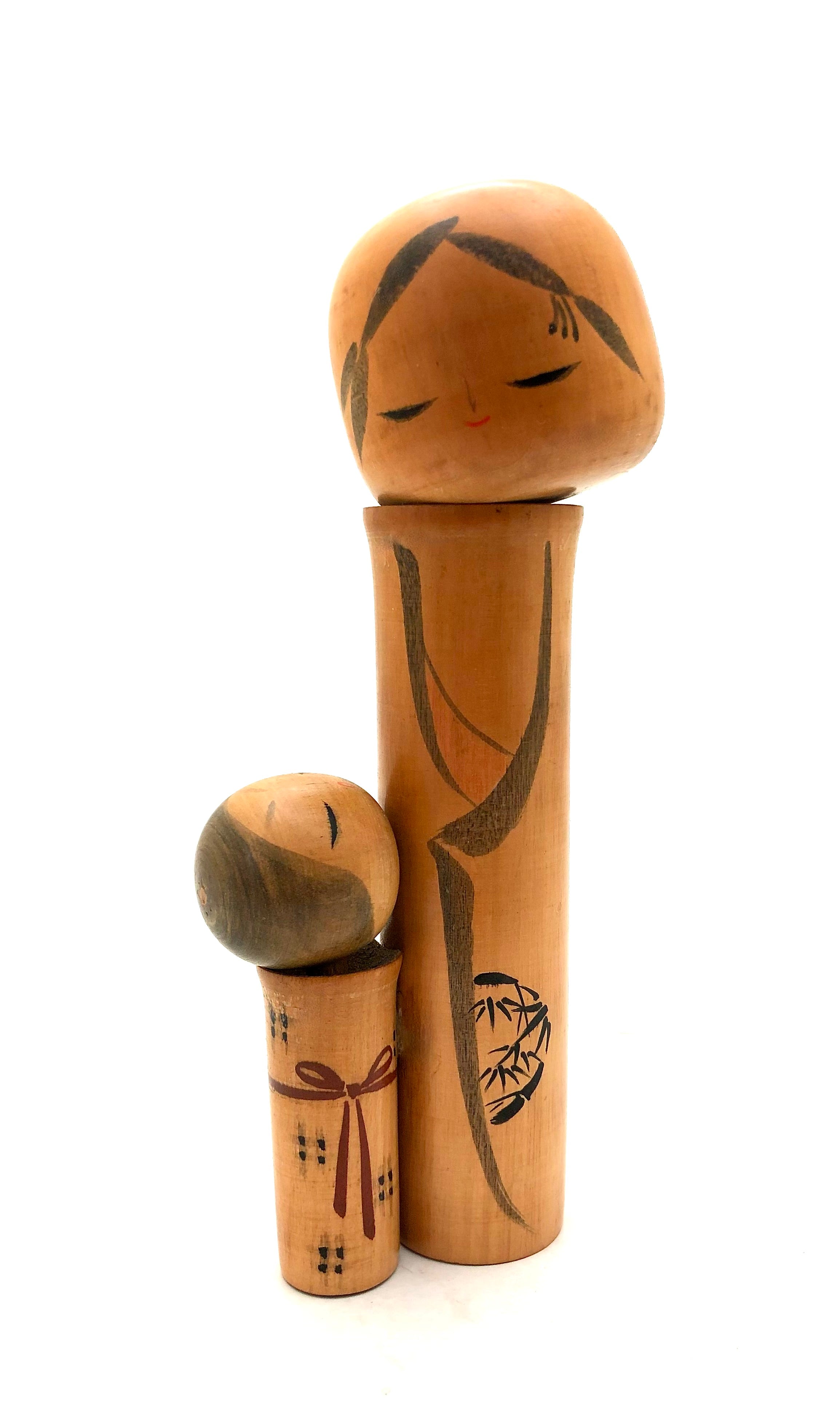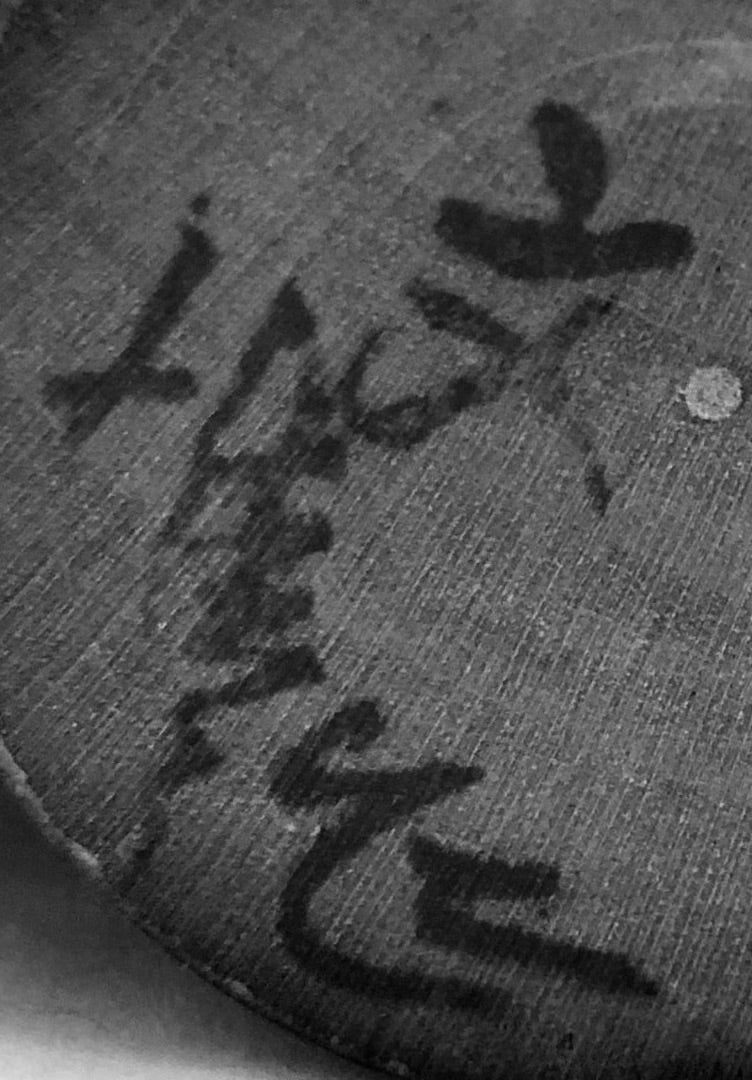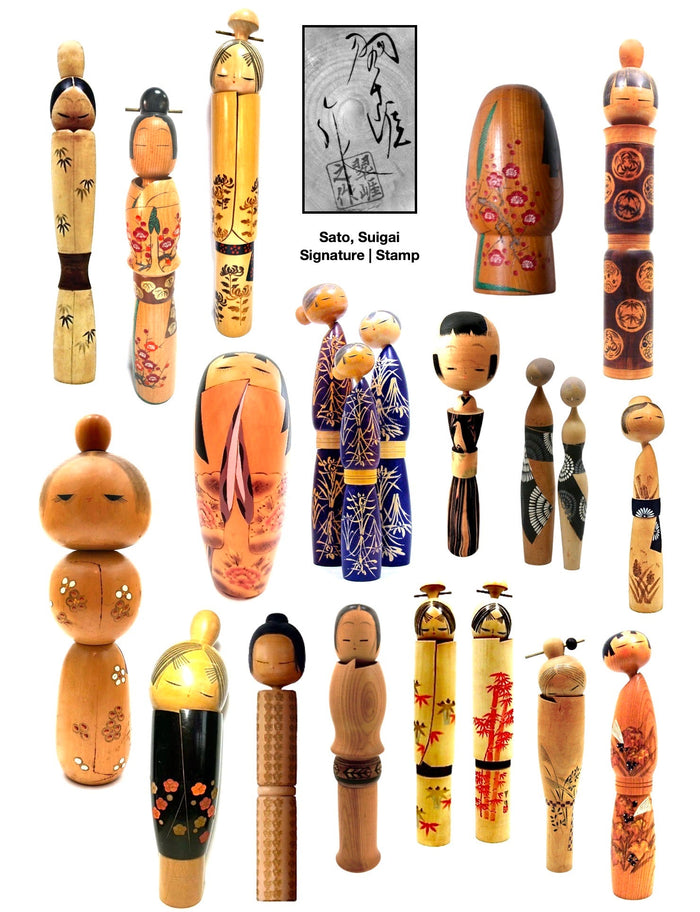


Vintage Sosaku Kokeshi entitled Haha-ko Oshin | Mother and Child by Sato, Suigai
Dimensions: 7-3/4”h
A typical theme of only a few artists is that of either the mother with child or the infant in the arms of the Oshin, (Baby Sitter). Japanese mothers are known for proactively predicting the needs of their children, making the prevention of fuss a high priority. The babysitter was a trusted and essential part of the Japanese family and was particularly important to rural mothers who daily worked the fields, and who needed assurance that each child would be lovingly cared for throughout the day. These turned figures exemplify the relationship between the figures, expressing serenity and stability. Simple painting defines each body with the mother in Kimono with a bamboo motif and the baby wearing a Yukata (bath garment) with a red sash. The piece is signed on the bottom.
Sosaku Kokeshi images of mother, Oshin, and child, as shown here, are rare subjects for inspiration in today’s Japanese artisan world, and are rigorously sought after by collectors.
Condition: Excellent meaning that the piece retains its original craft/workmanship showing a wonderful-developed patina commensurate which suggests a degree of wear that corresponds to its vintage. It is void of damage, cracks, breakage, or repairs and meets all the standards of the collectible Sosaku Kokeshi.

Artisan
Woodworker: Sato, Suigai
1920-
Biographical History:
Sato-san, named Sadahachi, was born in Okubo, Yoshioka Village, Gunma Prefecture, to a family who owned a silk trading business. At the age of 18, he began his professional career as a painter under the famous artist Komuro, Suiun, before pursuing a career in creative Kokeshi making in 1946. Sato-san also pursued careers in fashion design, engineering, and mechanics. In 1970, he was recognized for his wood crafting skills and named Holder of Excellent Technique. His Kokeshi dolls have won many awards, including the Prime Minister’s Award in 1966. In 1970, Sato-san’s artistry was recognized by Japan’s Imperial Family, Crown Prince Akihito, (Now Emperor Akihito), the Minister of Economy and Trade, and the Minister of Agriculture and Forestry. He is a member of the Cultural Properties Protections Committee of Hakone.
Collector's note – descriptive qualities, standard characteristics & ornamentation styles:
What is unique to this artist’s dolls is the unusual but traditional hairstyle, the wheat, summer grass, bamboo, (symbolizing prosperity, purity, and innocence), plum blossoms, and abstract leaves. In many instances, he utilizes an uncolored wood obi on both plain and vividly colored Kimono. He additionally incorporated ‘Stilt grass’, which is most commonly found in moist areas of wetlands. He also enjoyed representing ‘Kyoho budo’, (giant mountain grapes). Occasionally he incorporated pine, plum, and bamboo, referred to as “sho-chiku-bai”. Sato-san created many wonderful simple forms. Sato-san also created several large forms decorated with the family crests, (Mon) that are very tall, made in two separate sections from the same piece of wood, and joined with a connecting dowel. He regularly captures a peaceful nature in his doll's faces, complementing the serene nature that fills the countryside.
